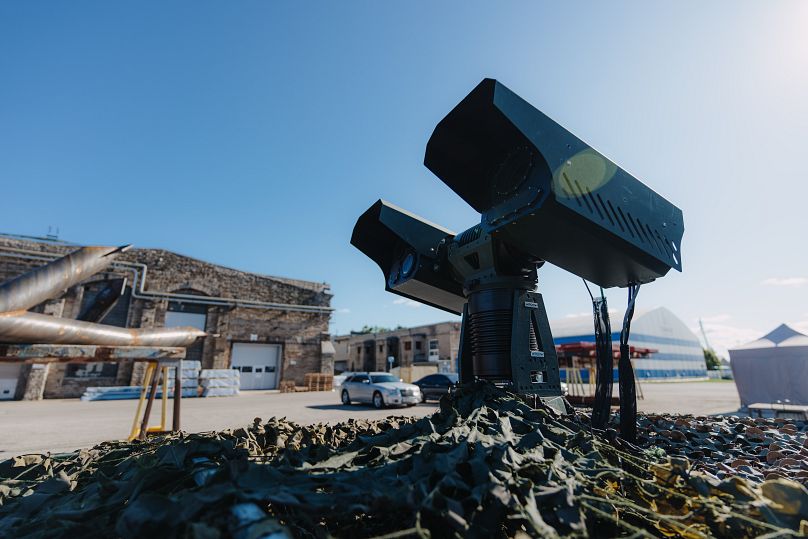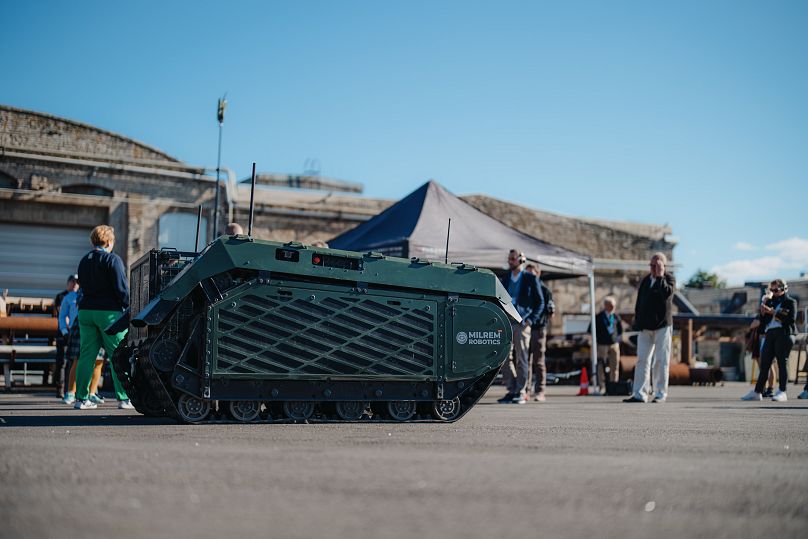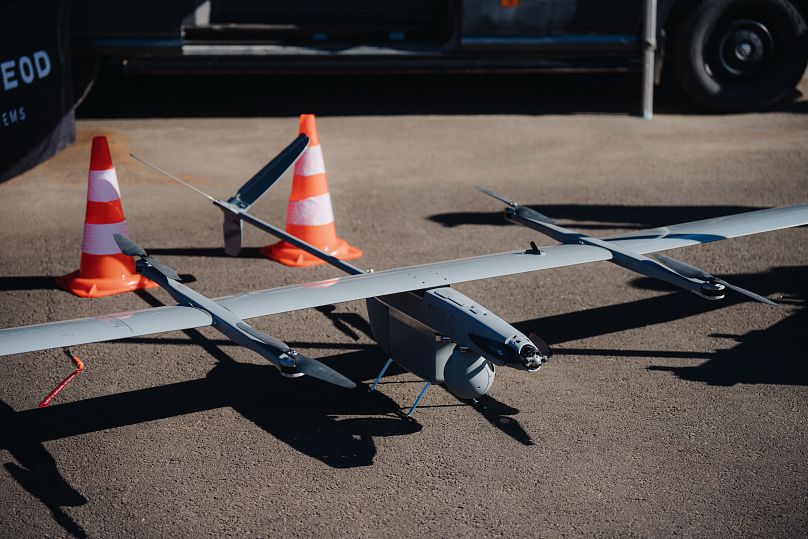Russia's invasion of Ukraine has galvanised the tech sector, shaking up states and startups around Europe.
The Ukraine war shattered the status quo.
It transformed the lives of millions of Ukrainians and Russians, triggered Europe's biggest refugee crisis since the Second World War, pushed Finland and Sweden to NATO and sent energy and food bills skyrocketing - the list is endless.
Yet, one stark transformation has been technological.
The fighting in Ukraine has turbocharged innovation in the defence industry, with Western countries splashing out billions on arms.
Novel changes have impacted drone warfare, with unmanned aerial vehicles becoming a key tool of both Moscow and Kyiv's campaigns.
The global military drone market is projected to grow from €13.3 billion in 2023 to €33.4 billion by 2030, according to Fortune Business Insights.
As a gruelling counteroffensive grinds on, Kyiv itself wants to spend around €1 billion to upgrade its drone-fighting capabilities, the AP news agency reported on Monday.
"We are developing a really agile, new technology," said Rauno Lember Chief Operating Officer of Marduk Technologies, during a panel discussion of experts within the Estonian defence sector.
Called the "slayer of bad drones", his company has developed the 'Marduk Shark', a mobile system that can detect, track and destroy drones from up to 5 km away.
Back in 2016 when Marduk - an Estonian startup named after a Babylonian god who hunted dragons - started pioneering "electro-optic" devices capable of detecting drones not operating on radio signals, "everybody was laughing at us," says Lember, because such technology did not yet exist.
But drones have since become radio silent and gained enough brain power to act autonomously, making Marduk's technology useful on the battlefield.
Though he could not give precise details, the Estonian entrepreneur told Euronews Next in an interview Marduk systems were deployed in Ukraine.
The country's minister for digital transformation, Mykhailo Federov, told the AP that Kyiv is committed to building a state-of-the-art "army of drones”, the value of which will be evident by the end of this year.
Despite advancements, Lember said there were still big questions about how to use such technology on the battlefield.
"In the world, there is no really good solution for drones right now. When companies say they have a full 100% counter solution, they're lying".
"Companies can detect drones kilometres away but the issue is they do not know how to take [them] down effectively," he told Euronews Next, citing the immense disparity in the cost of an anti-drone missile compared to the drone itself.
"The main issue from our side is that we have to tackle the threats we've seen."
Another novel technology right now is unmanned ground vehicles, aka robots.
Starting in 2013, Milrem Robotics has developed 15 robotic systems, which are deployed in 16 countries around the world, including in Ukraine and several NATO members.
Its zippy, low-noise 'TheMis UGV' is a remote-controlled robot that can be weaponised or used for bomb disposal and intelligence gathering.
"What we have seen on the ground in Ukraine confirms what we have been aiming for... our robotics have been used to take humans out of harm's way," said Sten Allik, Director of CD&E at Milrem Robotics at the expert panel, held at a shipyard in Kopli, Tallinn.
"That's what is most important."
"With machines, which just need a bit of fuel and some maintenance, you certainly see them as an option to increase [the] sustainability [of a military campaign]," he said. They have sold 14 of the TheMIS to Ukraine.
"There are segments... where robots are already better today than a human," he added.
So far Milrem's tech is semi-autonomous, assisting - rather than replacing - frontline troops, and Allik claimed this would be the case for the foreseeable future.
"The technology actually isn't at a point that... you can replace the frontline with unmanned tech. The thinking is over there, there's just no technology supporting [it]."
Still, the pace of technological change remains breakneck.
"Anything counter-drone system that is pre-2019 is like a grandfather," said James Acuna, a member of the European Defence Investor Network at the panel discussion.
"The counter UAV [unmanned aerial vehicle] market will definitely evolve and Ukraine is leading the charge on the military side."
Fuelling this rapidity is that Russian forces are usually able to develop countermeasures to Kyiv's deployment of new technologies in a matter of weeks, according to Allik.
"There is a permanent spiral and the one who is able to handle it, is the one who can handle the speed," he said.
Spurring innovation even further, the group of defence experts claimed Russia's invasion of Ukraine had encouraged more creatives to work in the defence tech industry.
This is particularly the case in Estonia, which lies on the Russian border, they claimed.
Before the war, "the defence industry was looked at as not so important. But now everybody realises it's about our freedom and existence," said Arno Vaik, CEO of Threod Systems, an Estonian developer and producer of drones.
"Young people are much more willing to do not only all this innovation but normal defensive work."
Perhaps one of the biggest impacts is how militaries and governments ' attitudes towards technology have been shaken up, says the expert panel.
NATO in 2021 launched its Defence Innovation Accelerator for the North Atlantic (DIANA), aimed at promoting disruptive technologies.
For the last 10 years, military customers were "very difficult" says Vaik, "especially if their country had been at peace."
"But now this is not the case for us. All militaries around the world, they're much more open to talk. They know more exactly what they need," he added.














